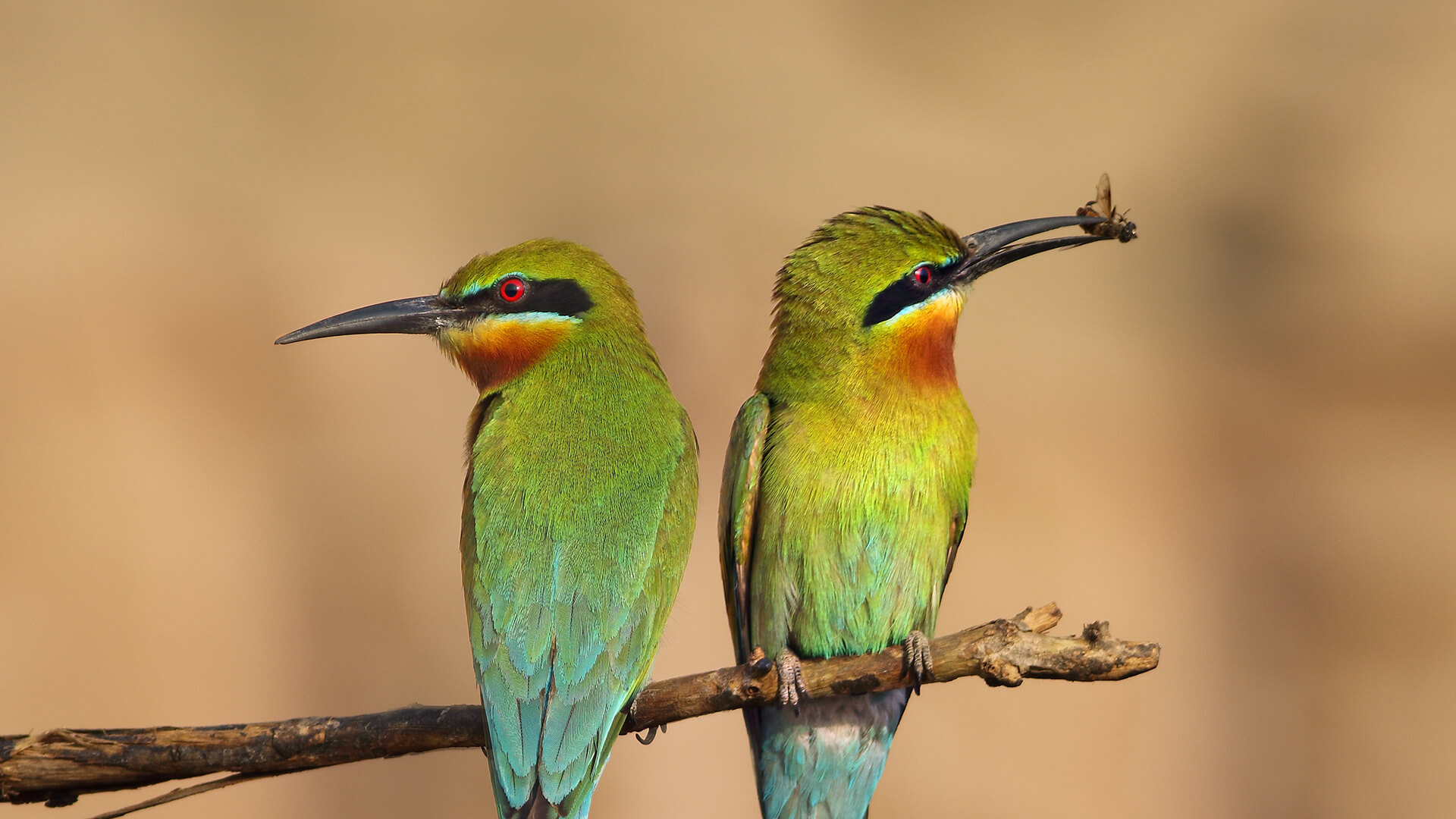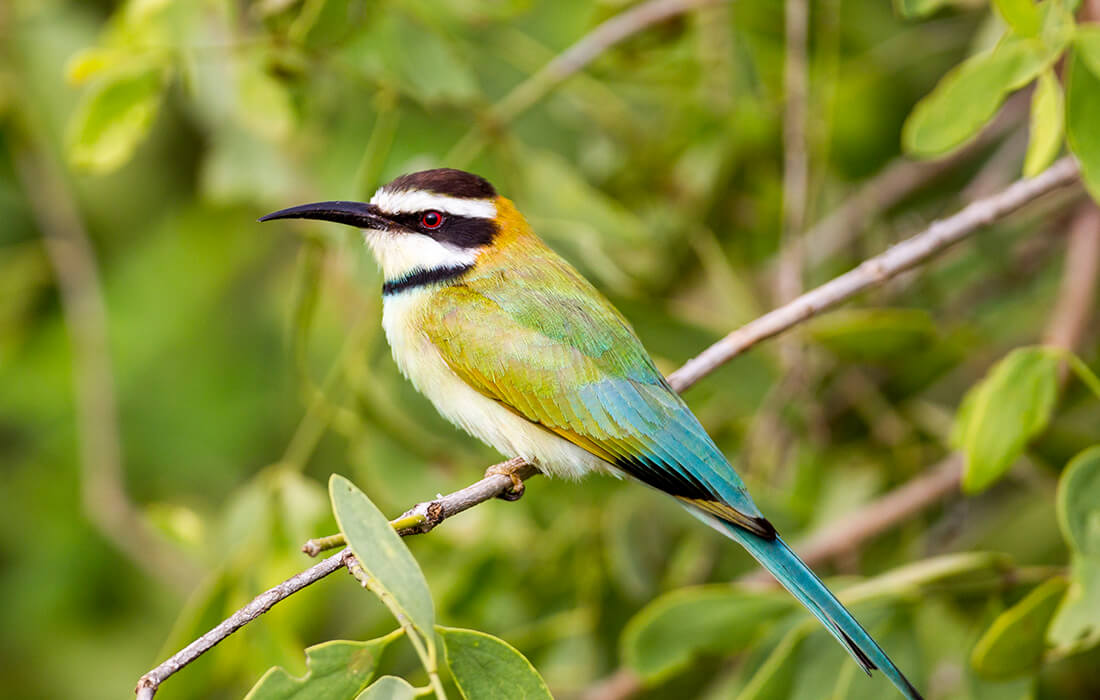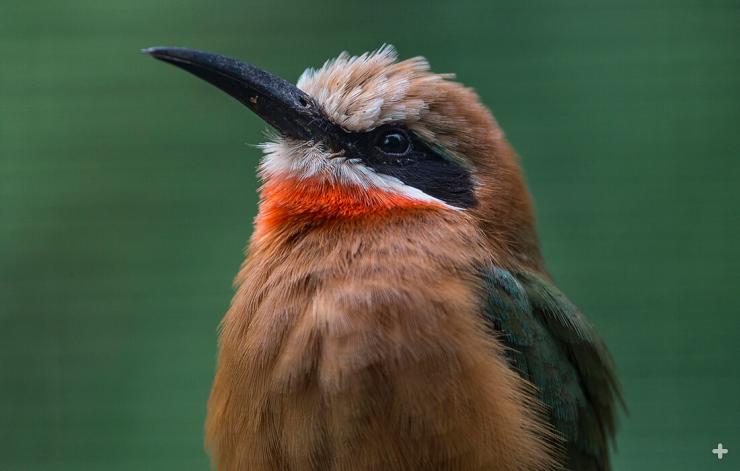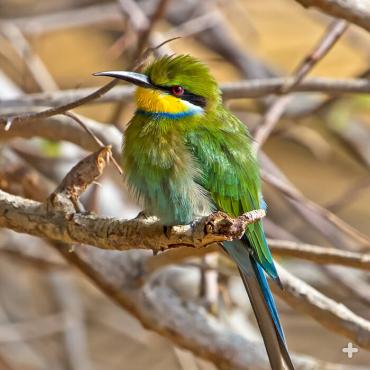
They are brightly colored, gregarious, and flamboyant. They are fast and fierce as a missile when it comes to securing a meal. And they can be deeply committed to others. These are just some of the characteristics of the 22 bee-eater species making up the Meropidae family.
Aptly named, these birds fearlessly pluck bees (and other flying insects) out of the air with their strong, downward curved beak, smack the victim’s head on a branch to stun it, rub its rump on a surface to remove the stinger and flush out the toxins, and chow down. Most bee-eaters are found in Africa and Asia, with some in southern Europe, Australia, and New Guinea. They are medium-sized, boisterous birds; males and females look nearly alike. The San Diego Zoo is pleased to care for two types of bee-eater in a walk-through aviary in Africa Rocks: white-fronted Merops bullockoides and white-throated M. albicollis bee-eaters.
Birds of a feather. Bee-eaters have one of the most complex social systems of any birds. Many species (but not all) are monogamous, cooperative breeders living in large colonies of over 100 birds, but can reach 200 birds if conditions are favorable. Bee-eaters of both sexes alternate between being breeders and helpers in their clan. Each bird lives in an extended family with members of four overlapping generations. They appear to recognize parents, siblings, offspring, friends, and nesting neighbors, likely from voice recognition. This cooperative behavior vastly improves survivorship of chicks. Females leave their natal group to join her mate’s family.
Tall order. Bee-eaters belong to the Coraciiformes Order, sharing the group with kingfishers, motmots, todies, rollers, and hornbills. Commonalities include small feet with a fusing of the three forward toes, brilliantly colored plumage, and cavity nesting in earth-banks or old trees. They are considered a medium sized bird, reaching 9.5 inches in length. Many bee-eater names reflect their flashy feathers if not the lack of imagination of the namers: red-throated, blue-headed, black-headed, red-bearded, purple-bearded, blue-cheeked, and cinnamon-chested, white-fronted, rosy, and little green bee-eaters. Some names harken back to their home: Australian, European, and Somali bee-eaters.
Most tropical bee-eaters are largely non-migratory, but some make lengthy, dramatic journeys. The carmine bee-eater performs an elaborate, three-stage migration, which is not yet fully understood.

Just bee. The white-fronted bee-eater is widely distributed in sub-Saharan Africa. It has olive colored upper parts, a white forehead and chin, and a red throat. Its tail is square.

The white-throated bee-eater, also found in Africa, has pale green upper parts, a black-and-white striped head, white throat (hence the name), black upper breast band, red eye, and a black bill. You can tell them apart at a glance: the white-fronted has red throat, while the white-throated has a white throat!







